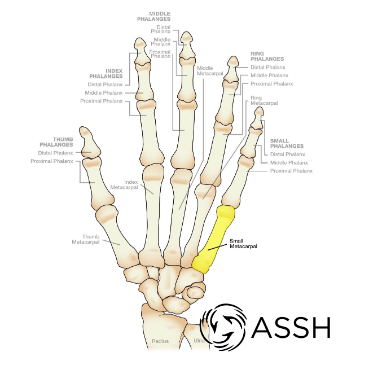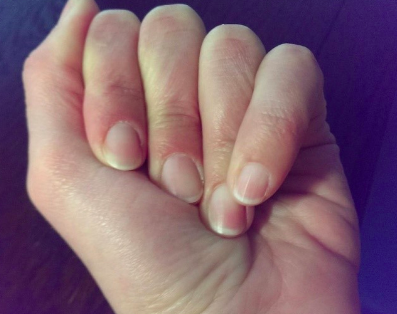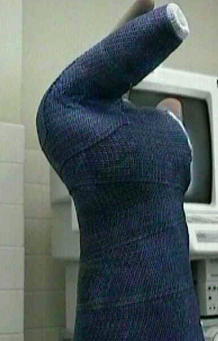Boxer's Fracture
A boxer’s fracture is a fracture (broken bone) of the hand. More specifically, it is a fracture of the neck of the fifth metacarpal (a bone in the “pinky finger”) (Figure 1). It is referred to as a boxer’s fracture, because most commonly, it occurs when people punch something.

Causes
The most common cause of a boxer’s fracture is the force applied to the fifth metacarpal bone when the first punches something while in a clenched position. Less commonly, this fracture may also occur from getting the hand crushed.
Signs and Symptoms

Most people with a boxer’s fracture have pain and swelling concentrated in the hand. The hand and finger may be crooked or deformed. The pinky finger may be difficult to straighten and sometimes can cross over the other fingers (Figure 2). There also may be difficulty moving the fingers, either with or without pain.
Treatment
To determine if you have a fracture, your doctor will likely take an x-ray. Treatment varies depending on how far out of place the bone is located. If it is out of place too far, the doctor or provider may offer to push it back into place and cast it or may offer surgery.
- Casting: Typically, it will be about 3-6 weeks in a cast or similar device (Figure 3). After the cast is taken off, you’ll be encouraged to get the fingers moving.
- Surgery: This is frequently done with pins through the skin, but there may be other options depending on the specific fracture. Sometimes, the surgeon will recommend therapy afterwards to help with motion.

